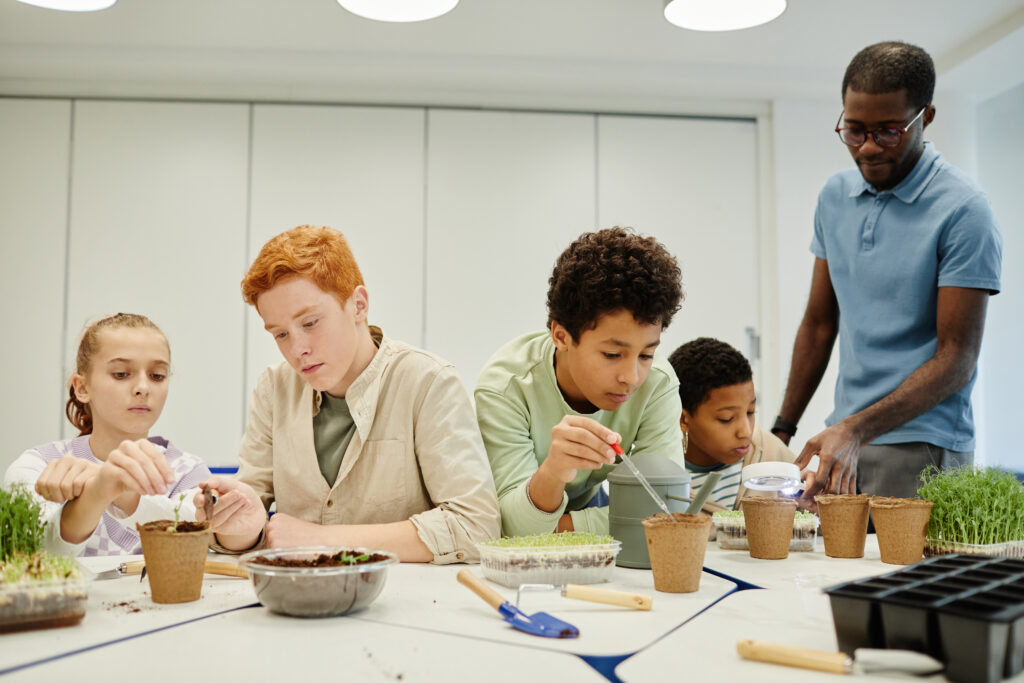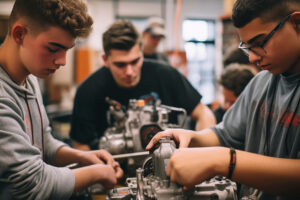Part two of a two-part reflection on a half-day session with NEA Leadership

Community schools are public schools that provide services and support that fit each neighborhood’s needs, created and run by educators, local community members, families, and students working together to transform the teaching and learning conditions so that all students can reach their full potential.
“In community schools, as in all schools, teachers teach and students learn—but with a focus on the whole child: an integrated focus.”
This straightforward banner sentence from their website explains why NEA is so bullish about Community Schools. Community schools are one way to improve the quality, variety, availability, and relevance of learning and learning supports during the day in the school building, ensuring that students don’t have to leave to learn.
NEA’s six pillars of community schools specify this whole child approach: 1) strong and proven curriculum, 2) high-quality teaching, 3) inclusive leadership, 4) positive behavior practices, 5) family and community partnerships, and 6) community support services emphasize the importance of strengthening teaching and learning. These pillars provide the foundation for creating the kind of learner-centered, real-world approaches end-users and researchers emphasize are critical for supporting the whole child and essential for engaging adolescents.
But this statement, for me, captures the spirit of NEA’s commitment that came through in our half-day session with some of the organization’s leaders:
“Community schools transform traditional public schools into neighborhood hubs that mobilize students, staff, families, and community members to reimagine education and co-construct a shared vision for their school and community.”
Every phrase in this bold statement is worth unpacking:
- What does it take to transform a traditional school? What barriers to change need to be recognized and removed before new ways and forms of working can take root?
- What does it mean for a school to be a neighborhood hub? Is the school just a neighborhood place where stakeholders come together for reimagining and planning? Does the school also become a learning hub, explicitly leveraging community resources to create and credit real-world, competency-based learning experiences?
- Are students, staff, families, and community members co-constructing a shared vision of the purpose of education that includes their roles and responsibilities as ongoing contributors to ensuring all students have services, supports, and opportunities for learning and thriving?
- What new ways, new forms, and new measures are needed to create room for this shared vision to take root by elevating the role of community and community members as real-world educators and champions?
- Are these stakeholders being given the support they need to bring their full selves into the learning endeavor in ways that don’t just free up teachers’ time, but strengthen their capacity to build students’ competence, confidence, and connections?
NEA membership is more than teachers. It is open to all school staff: classroom teachers, school librarians, nurses, counselors, and educational support professionals (classroom paraprofessionals, clerical/administrative, maintenance, food service, transportation, security, health/student services, skilled trades, technical). These non-teaching staff are 35 to 50 percent of the school staff. And they have a huge influence on school climate and culture. They are often more likely to be a part of student’s cultural, civic, and geographic communities. They have opportunities to see students in different contexts, engage them in ways that may feel more relevant and relational, and even challenge them to participate in activities that build on their strengths and align with their interests.
As noted in last week’s blog, an important step in students’ learning to leave is having a stable, supportive home base to return to. The more students know and trust peers and adults in their schools, the more likely it is that they will find and build connections between the school community and the real world, including bringing more of themselves, their interests, and their connections into the classroom. And the more every adult in the school is empowered and entrusted with building relationships and enriching experiences not only in classrooms but in clubs on sports fields, in libraries, cafeterias, counselors’ offices, and on buses, the more likely it is students have the support they need to navigate in school and in the community.
Here are a few facts on education support professionals from NEA’s website that can help all of us see the potential for broadening our definition of educators:
- The average age is 53, 4 in 5 are female.
- Two-thirds live in the district where they work, many volunteer in their communities.
- Three-quarters have responsibility for promoting and ensuring student and staff safety.
- More than half have associate’s or more advanced degrees.
- Two-thirds are hourly employees, 84% work full-time.
- Three in five have given money out of their own pockets to help students have what they need for school, averaging $282 per year.
Ron Berger from EL Education often says that you can’t build a strong student culture without first building a strong adult culture. Strong community schools start with school communities in which every adult and every student is known, engaged, and respected. I couldn’t agree more.



No comment yet, add your voice below!